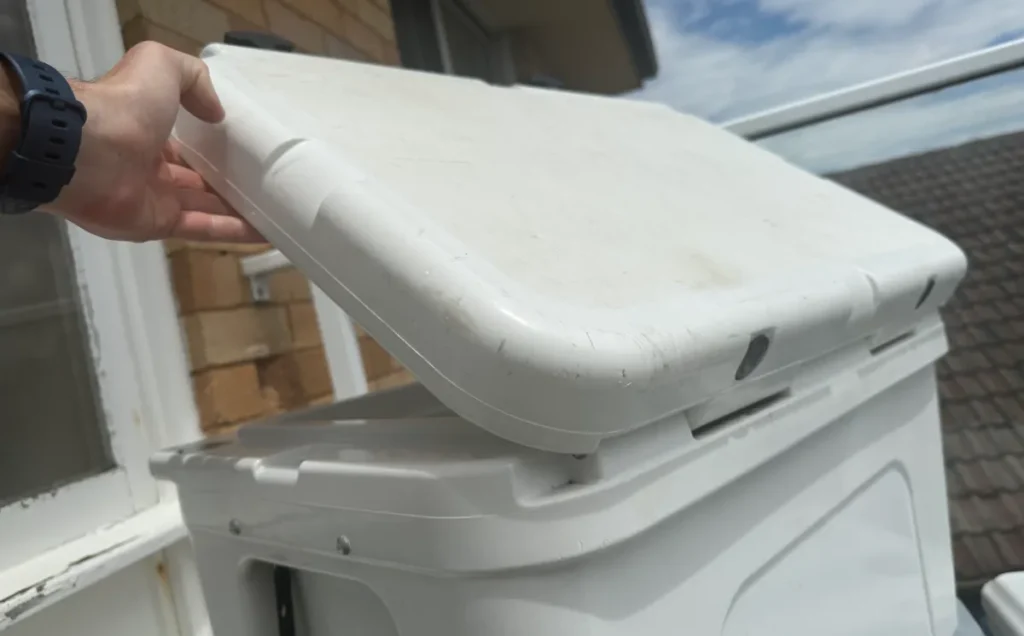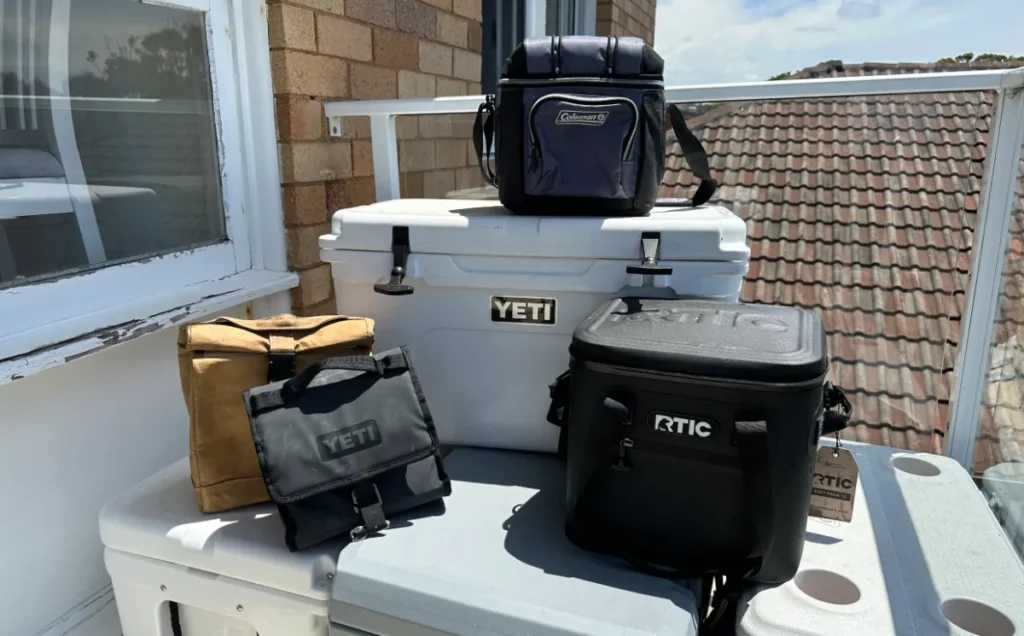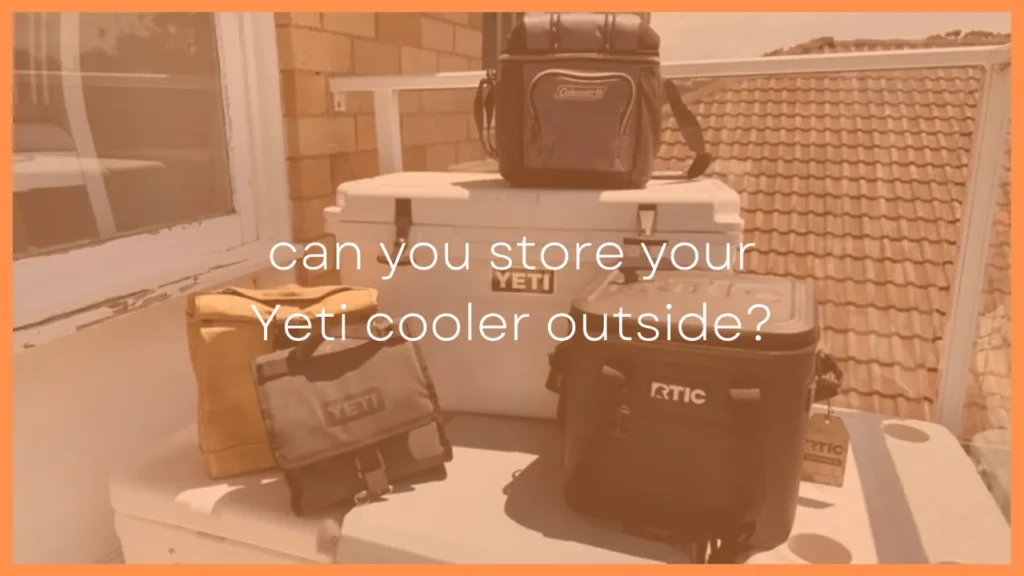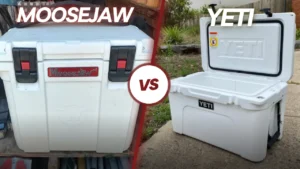I've had my Yeti cooler for over 7 years now and while I know it's generally better to keep your cooler under cover and not outside sometimes space doesn't allow it.
So can you store your Yeti coolers outside or will the sun, rain and other elements destroy them?
Hard Yeti coolers can be left outside for extended periods of time and will show minimal damage other than some minor color fading. Soft Yeti coolers, while UV resistant, will show greater deterioration when left outside in the sun and rain for extended periods of time.
The hard Yeti coolers have thick roto-molded polyethylene outer walls, a plastic that is waterproof and also UV resistant. Some colors may fade over time when left outside and the rubber latches may deteriorate faster when exposed to the elements. But overall they seem to hold up well.
V Series Yeti coolers are made from stainless steel, which is rust resistant and waterproof. However, stainless steel will rust faster when left outside, especially if you live in a coastal area where there is a lot of salt water in the air.
You can leave soft Yeti coolers outside for short periods of time because they have a durable DryHide shell that’s waterproof and UV resistant. However, extended periods exposed to the elements will break down the external fabric faster than if you store it indoors in a cool dry place.
If you don’t have space to store your Yeti cooler inside or you’re camping for a few weeks, it’s good to understand how they hold up to extreme weather.
What Happens If You Leave a Yeti Cooler Outside?

If you leave a Yeti cooler outside for an extended period, it shouldn’t show any visible damage because Yetis are waterproof, durable and UV resistant. However, you’ll need to pre-chill it before use if you’ve stored it in the sun as the insulating walls need to be cooled.
Above you can see my Yeti cooler which is now going on 7 years old. 5 of those years it has been stored inside but for 2 years I left it outside all year round exposed to the elements and to the harmful UV rays of the sun. It's held up incredibly well.
I actually left 3 coolers on my north facing 4th story balcony for 2 years straight with constant sunlight exposure. It gets very hot where I live and the sun is extremely strong and damaging.
My Yeti cooler showed no signs of damage at all and worked perfectly, while my Coleman cooler became brittle, discolored and the hinges started rusting.
My Lifetime cooler's lid began to warp, making it less effective, whereas the Yeti cooler showed no signs of warping of damage at all.
I didn't leave any soft coolers out in the weather for extended periods of time as these are more prone to UV damage.
Ideally you should NOT do what I did and you should protect your Yeti cooler from the elements as best as possible if you want it to last as long as possible. If you can’t find a cool or shady spot, it's a good idea to cover it with a tarp or towel.
This will protect it from the rain as well as the majority of the sun's harmful UV rays.
The only issues you’ll have when storing your Yeti in direct sunlight is warm insulation because your ice will last half as long than if it was stored in the shade or a cool place.
Hard Yeti coolers are almost completely airtight and very little air and moisture gets in and out when they’re closed. The insulation is also extremely dense and while it works well to keep out heat it can also trap a lot of heat if it's stored in the sun.
Before using your Yeti it's important to bring it inside and pre-chill your cooler the night before you plan on using it. This will bring down the temperature of the insulation in the walls of your cooler and will ensure your ice lasts longer in your Yeti cooler.
How To Correctly Store a Yeti Cooler Outside

Storing a Yeti cooler inside and out of direct sunlight is always the best because it keeps the outside clean, dry and safe from harmful UV rays and extremely temperatures. However, if you have to store it outside, here are some helpful tips:
- Clean your Yeti thoroughly before storing it. This gets rid of any dirt that can cause bacteria, fungi or other microbes to multiply, causing stains or smells. The best way to clean a Yeti is with warm water and a mild detergent.
- Allow the cooler to dry thoroughly before storing it. This step is vital because even a tiny amount of moisture can promote bacterial growth, giving you a nasty and smelly surprise when you next open the cooler. You may need a few days for the cooler to dry properly.
- Cover the cooler and keep it out of direct sunlight if you can. Your Yeti will be able to withstand direct sunlight but covering it with some tarp or similar will speed up the pre chilling process when you need to use it.




